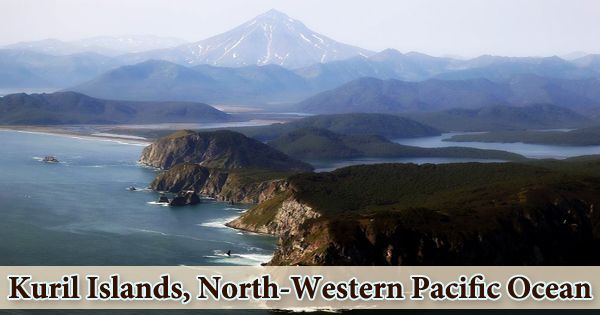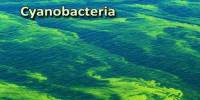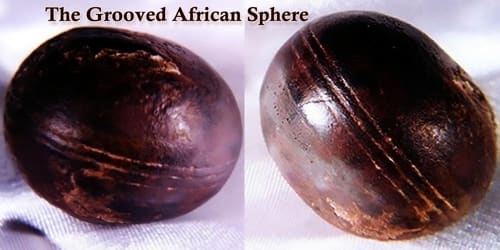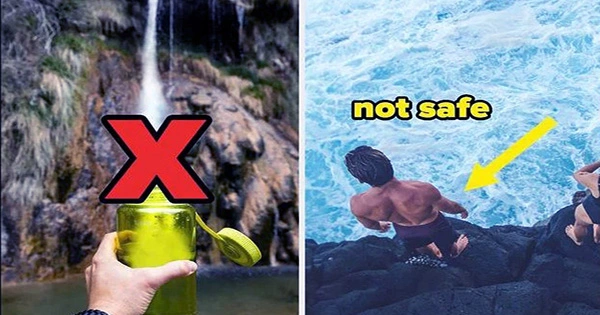The Kuril Islands or Kurile Islands (/ˈkʊərɪl, ˈkjʊərɪl, kjʊˈriːl/; Russian: Кури́льские острова́, tr. Kurilskiye ostrova, IPA: kʊˈrʲilʲskʲɪjə ɐstrɐˈva or Russian: островá Тисима, tr. ostrova Tisima), Japanese – Chishima-rettō (千島列島), in the Sakhalin Oblast region of Russia, is an archipelago of volcanic islands that extends from Hokkaido, Japan, to the Russian Kamchatka Peninsula, approximately 750 miles (1,300 km) northeast, separating the Okhotsk Sea on the east from the North Pacific Ocean on the west. There are 22 main islands in the chain, most of which are volcanically active, and about 30 smaller islets. Amongst the islands, there are at least 160 volcanoes, 40 of which can be identified as currently active. For our Russian Far East cruises, the islands which form part of the ‘Pacific Ring of Fire’ provide the perfect backdrop. The total area of land is 4,055.3 sq mi (10,503.2 square kilometers), and the total population is 19,434.
The islands were discovered in the seventeenth and eighteenth centuries by Russians, after which settlement began. As part of its territory, Japan claims the four southernmost islands, including two of the three largest (Iturup and Kunashir), as well as the Shikotan and Habomai islets, which have contributed to the continuing conflict over the Kuril Islands. In Japan, the disputed islands are known as the “Northern Territories” of the world. As far back as the 18th century, Japan began to colonize the Kuril Islands, capturing them in 1875. The chain was home to some 17,000 Japanese citizens before the outbreak of World War II. The Japanese people were exiled when Russia invaded the islands, and the Russians started building up a strong military presence that remains to this day.
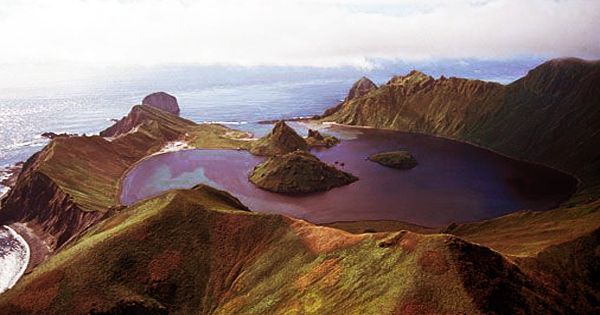
In 2018, the Russo-Japanese talks with Japan on island reunification resumed. The Kuril Islands are actually known in Japanese as the Chishima Islands (literally the Archipelago of the Thousand Islands), also known as the Kuriru Islands (literally Kuril Archipelago). Artifacts recovered from recent excavations indicate that the original inhabitants may well date to the time of Epi-Jomon (2250-1300-year BP). The historical Ainu population, which flourished on the islands from about 800 years BP until recently, has a large number of objects attributable to it.
Earthquakes and tidal waves are common; the tidal wave of 1737, one of the highest on record, reached a height of 210 feet (64 meters). The Kuril Trench is parallel to the chain, on the Pacific floor, and reaches a depth of more than 6.5 miles (10.5 km). Rumors of vast deposits of oil and natural gas underneath the seas surrounding the Kurils have led Russia to increase its military presence. On the Iturup volcano, deposits of the rare and highly valuable mineral rhenium used to make military jets and rocket engines were also found.
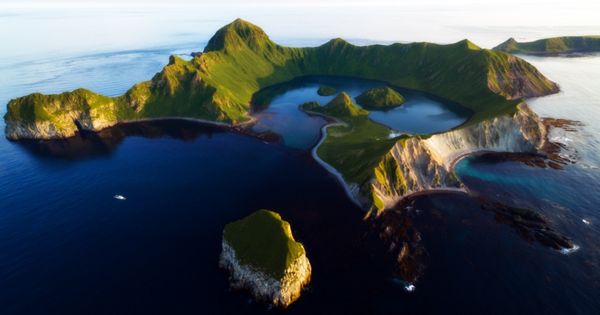
The Kuril Islands are part of a ring of tectonic instability known as the Pacific Ring of Fire that covers the Pacific Ocean. The islands themselves are stratovolcano summits that are a direct result of the subduction under the Okhotsk Plate of the Pacific Plate that forms the Kuril Trench some 200 km (124 mi) east of the islands. The climate on the islands is extreme, with winters long, cold, and snowy, and summers mild, wet, and foggy. The average annual precipitation is 760-1,000 mm (30-40 inches), much of which occurs as snow, which can happen from the end of September to the beginning of June in any month. There is regular seismic activity, including an earthquake of magnitude 8.5 in 1963 and one of magnitude 8.3 recorded on November 15, 2006, which resulted in tidal waves hitting the California coast up to 1.5 meters (5 ft). Raikoke Island has an active volcano that erupted again in June 2019, with emissions exceeding 13,000 m, near the center of the archipelago (42,651 ft).
Several islands are still inhabited, with an approximate total population of 30,000 in 2005. Most of these people are on the southernmost islands of Iturup, Urup and Kunashir, with only a handful still remaining on the island of Paramushir. The climate of the Kuril Islands, however, is much more similar to the subpolar oceanic climate of southwest Alaska than the hypercontinental climate of Manchuria and inner Siberia, as heavy precipitation and completely absent permafrost are present. It is characterized by mild summers above 10 °C or 50 °F for only 1 to 3 months and cold, snowy, highly windy winters below -3 °C or 26.6 °F, while normally above -10 °C or 14 °F.
Many types of beach and rocky coasts, hills, large rivers and swift gravelly streams, trees, grasslands, alpine tundra, crater lakes and peat bogs are landscape types and ecosystems on the island. The vegetation varies from the tundra on the northern islands to the thick forest on the larger islands in the south. Fishing, especially for crab, is the only major occupation. The towns of Kurilsk on Iturup, the largest island, and Severo-Kurilsk on Paramushir are the principal centers. On the southern islands, some vegetables are cultivated. The Alaid volcano (highest point: 2,339 m or 7,674 ft) on Atlasov Island at the northern end of the chain and Tyatya volcano (1,819 m or 5,968 ft) on Kunashir Island at the southern end are the highest elevations on the islands.
The waters around the Kuril Islands are among the most fertile in the North Pacific due to their position along the Pacific shelf edge and the confluence of the Okhotsk Sea gyre and the southward Oyashio current, supporting a wide variety and high abundance of marine life. Many millions of seabirds, including northern fulmars, tufted puffins, murres, kittiwakes, guillemots, auklets, petrels, gulls, and cormorants are home to the Kuril Islands. Virtually any imaginable hummock, cliff niche or underneath a boulder is filled by a breeding bird on many of the smaller islands in summer, where terrestrial predators are absent.
The Kuril Islands are home to two eared seal species, the Steller sea lion and the northern fur seal, both of which form some of Russia’s largest reproductive rookeries in the summer on several smaller islands along the chain. Asian mainland taxa through migration from the Hokkaido and Sakhalin Islands and Kamchatkan taxa from the North dominate the composition of the terrestrial species on the Kuril Islands. Although highly diverse, the degree of endemism is relatively low. According to the Regional Administration, about half of the population lives below the poverty line on this island. The main profession is fishing. In terms of fishing and mineral deposits of pyrite, sulfur and various polymetallic ores, the islands have strategic and economic importance.
Information Sources:
